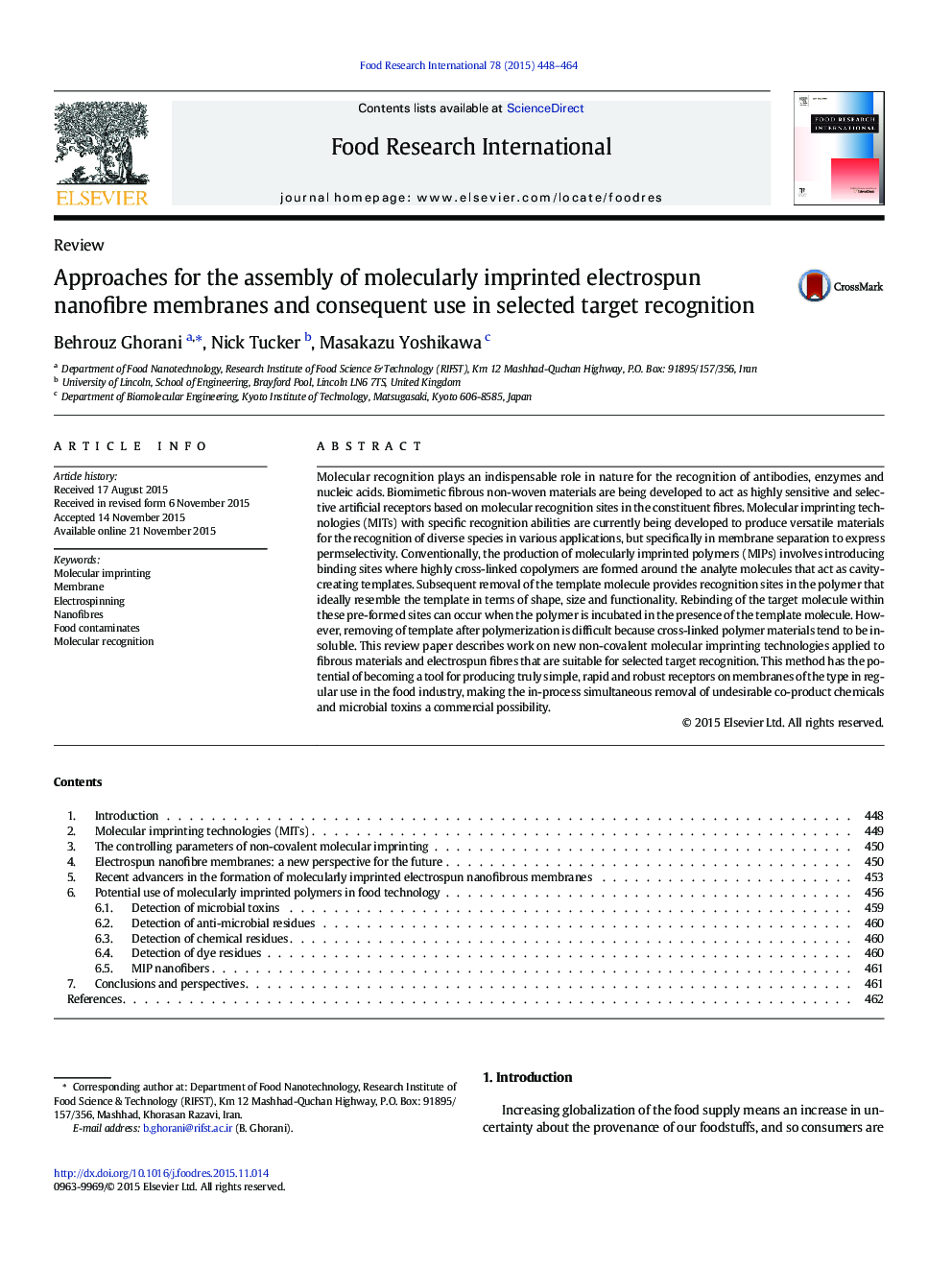| کد مقاله | کد نشریه | سال انتشار | مقاله انگلیسی | نسخه تمام متن |
|---|---|---|---|---|
| 4561338 | 1628470 | 2015 | 17 صفحه PDF | دانلود رایگان |
• Overview of molecular imprinting technologies
• Comprehensive discussion on the electrospinning process
• Generation of molecular recognition sites in electrospun membranes
• Potential use of molecularly imprinted polymers in food technology
Molecular recognition plays an indispensable role in nature for the recognition of antibodies, enzymes and nucleic acids. Biomimetic fibrous non-woven materials are being developed to act as highly sensitive and selective artificial receptors based on molecular recognition sites in the constituent fibres. Molecular imprinting technologies (MITs) with specific recognition abilities are currently being developed to produce versatile materials for the recognition of diverse species in various applications, but specifically in membrane separation to express permselectivity. Conventionally, the production of molecularly imprinted polymers (MIPs) involves introducing binding sites where highly cross-linked copolymers are formed around the analyte molecules that act as cavity-creating templates. Subsequent removal of the template molecule provides recognition sites in the polymer that ideally resemble the template in terms of shape, size and functionality. Rebinding of the target molecule within these pre-formed sites can occur when the polymer is incubated in the presence of the template molecule. However, removing of template after polymerization is difficult because cross-linked polymer materials tend to be insoluble. This review paper describes work on new non-covalent molecular imprinting technologies applied to fibrous materials and electrospun fibres that are suitable for selected target recognition. This method has the potential of becoming a tool for producing truly simple, rapid and robust receptors on membranes of the type in regular use in the food industry, making the in-process simultaneous removal of undesirable co-product chemicals and microbial toxins a commercial possibility.
The capability for electrospun MIPs to be a cheaper and easier production method for antibody/enzyme/protein like binding sites and novel sensors for rapid detection of chemical- dye residues, contaminants and particularly microbial toxins shows a promising future as we develop our knowledge and apply it in the field of food and food-related products.Figure optionsDownload as PowerPoint slide
Journal: Food Research International - Volume 78, December 2015, Pages 448–464
